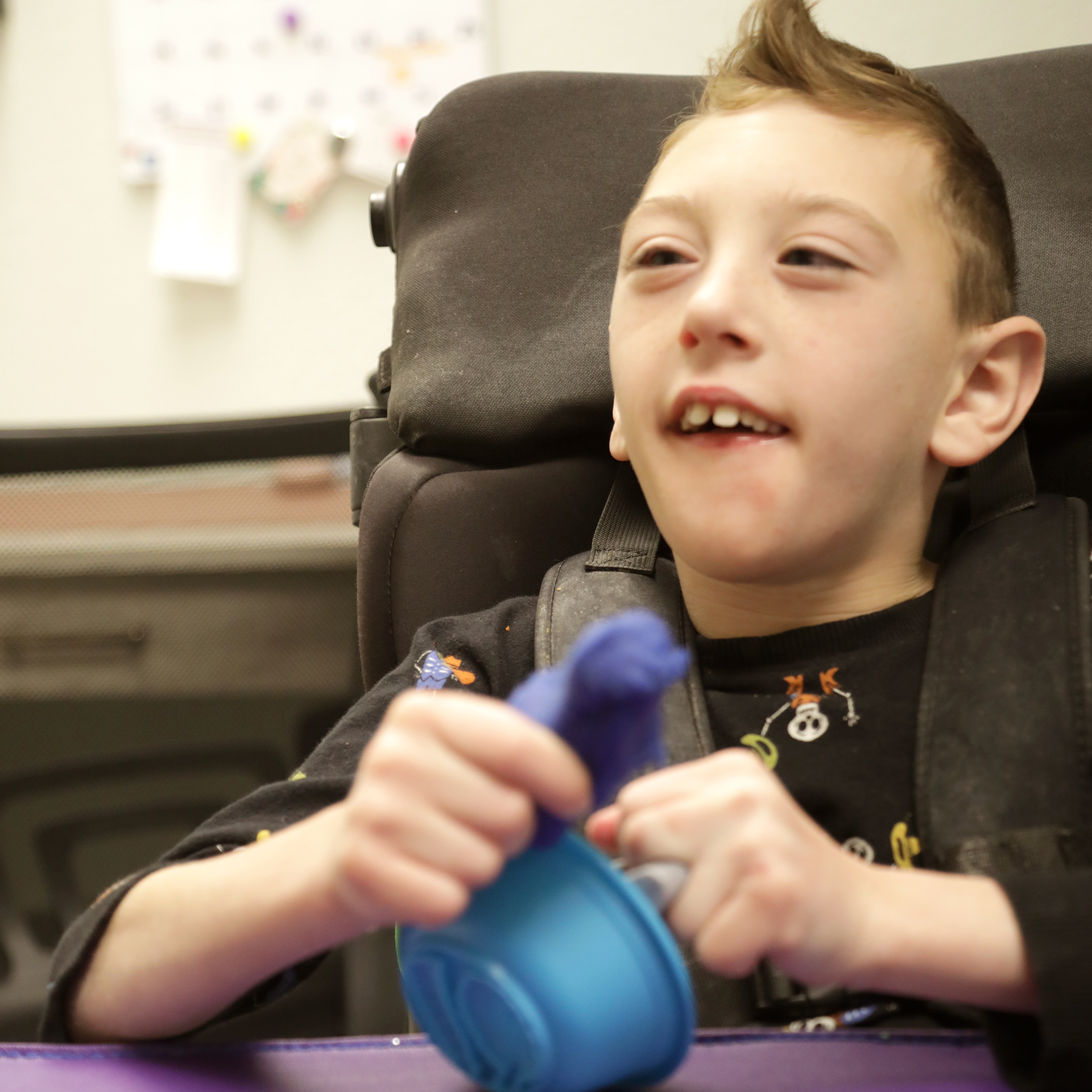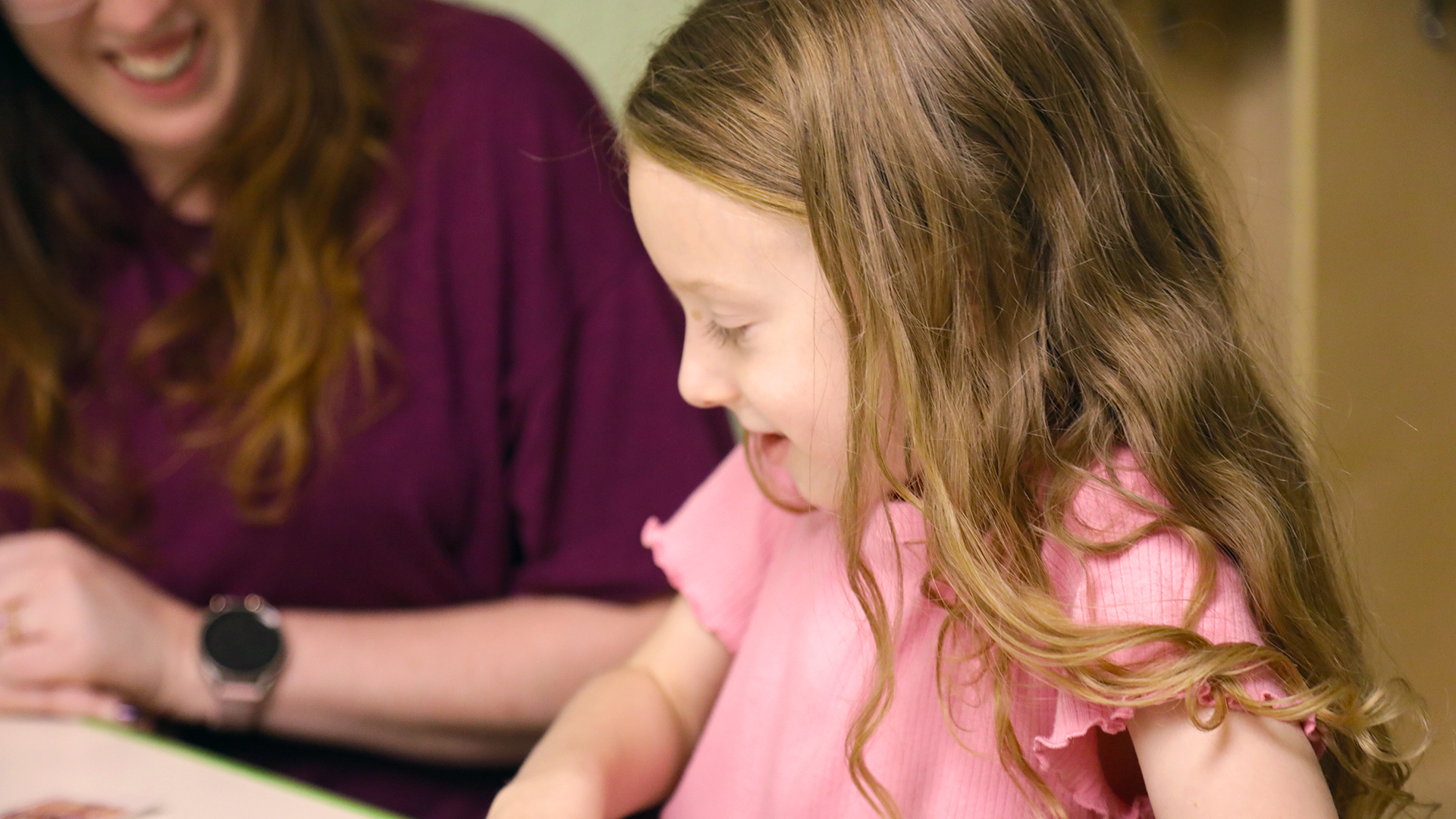The Role of Occupational Therapy in Child Development


Understanding the Impact of Occupational Therapy on Children's Growth
Occupational therapy (OT) is a cornerstone of pediatric development, offering tailored interventions that help children overcome challenges and reach their full potential. From infancy through adolescence, OT promotes physical, cognitive, emotional, and social skills, supporting children in navigating daily life with confidence and independence. This article explores the vital role of occupational therapy in fostering holistic child development, examining its principles, applications, and benefits across various settings.
Foundations and Principles of Pediatric Occupational Therapy

What is the role of occupational therapy in child development?
Pediatric occupational therapy is pivotal in nurturing a child's growth by fostering essential skills for daily living and independence. It helps children improve fine motor abilities such as handwriting and hand-eye coordination, as well as gross motor skills like running, jumping, and climbing. Self-care routines, including dressing, grooming, and feeding, are also supported through targeted interventions.
Beyond physical skills, occupational therapy addresses social and behavioral development. Therapists work on communication, emotional regulation, and social skills, which are vital for successful interactions and inclusion in group settings. Children with conditions such as autism spectrum disorder, birth injuries, developmental delays, or after traumatic injuries benefit from personalized therapy plans that include activities, exercises, and adaptive tools.
The overarching goal is to overcome obstacles, build confidence, and enable children to participate actively in family, school, and community activities. By doing so, occupational therapy plays a critical role in helping children achieve a greater level of independence and quality of life.
What are the benefits and applications of pediatric occupational therapy?
Children stand to gain a multitude of benefits through pediatric occupational therapy. It helps them attain developmental milestones, improve motor skills, and develop sensory processing capabilities. These improvements contribute to better academic performance, social interactions, and daily self-care.
In practical application, OT is employed in diverse settings such as clinics, schools, early intervention programs, and home environments. It supports children with conditions like autism, cerebral palsy, sensory processing disorder, or injuries, ensuring they adapt well to their environments.
Goals include enhancing handwriting, organizing daily routines, and improving social and communication skills. Family involvement and real-world activity focus maximize skill transfer and sustainability.
Overall, pediatric occupational therapy promotes holistic development by addressing physical, cognitive, and emotional needs, thus empowering children to live more independently and confidently.
How does occupational therapy support various aspects of child growth and development?
OT enhances multiple facets of a child's development. Fine motor improvement helps with writing, drawing, and manipulating objects. Gross motor skills, such as balancing and jumping, are strengthened to support mobility and physical activity.
Sensory processing strategies, like sensory integration therapy, assist children in managing sensory stimuli, which can be especially beneficial for children with sensory processing disorder or autism. Creating sensory-friendly environments, such as reducing noise or adjusting lighting, supports their comfort and engagement.
Cognitive development is supported through memory games, problem-solving tasks, and attention-building activities, fostering skills that contribute to learning and academic success.
Social skills are developed through structured group activities, role-playing, and communication exercises, promoting cooperation, sharing, and relationship-building. Emotional regulation training helps children recognize and manage emotions, fostering resilience.
By addressing these interconnected areas, occupational therapy promotes children's overall ability to participate fully in daily life, education, and social activities, fostering independence and self-confidence.
What interventions and methods are used by occupational therapists to aid child development?
Occupational therapists employ a variety of evidence-based methods tailored to each child's unique needs. Therapy often includes therapeutic activities like play, movement exercises, and sensory activities designed to be engaging and functional.
Sensory integration techniques—such as swinging, tactile play, and deep pressure activities—help children process and respond to sensory inputs more effectively. Adaptive strategies include modifying routines or environments to remove barriers to participation.
Specific interventions like Constraint-Induced Movement Therapy, handwriting training, and goal-directed task practice have demonstrated effectiveness in improving motor and cognitive skills.
Family involvement is crucial; therapists educate caregivers on exercises and strategies to support ongoing development at home. Use of assistive devices or adaptive tools further enables children to participate fully in daily routines.
Overall, the goal of these interventions is to enhance functional independence, confidence, and well-being through a combination of practical activities, skill development, and environmental modifications.
What is the role of occupational therapy in early intervention for children with developmental delays?
In early intervention, occupational therapists work closely with infants and toddlers to support their developmental progress. They focus on helping children engage in everyday routines related to play, self-care, and social participation.
Therapists perform comprehensive assessments to identify specific delays or challenges in physical, sensory, cognitive, or social domains. Based on these evaluations, they develop individualized plans aimed at fostering age-appropriate skills.
Interventions often involve guiding parents and caregivers through activities that promote motor development, social engagement, and sensory regulation. Strategies include creating structured play routines, sensory activities, and supporting emotional regulation.
Early intervention through occupational therapy aims to improve developmental trajectories, preventing future disabilities or decreasing existing dysfunction. It emphasizes a family-centered, natural environment approach, ensuring that children thrive in everyday settings and transitions are smooth.
By addressing developmental delays early, occupational therapy helps lay a strong foundation for lifelong skills, independence, and confidence.
Assessing and Addressing Developmental Challenges Early On

How does occupational therapy contribute to achieving developmental milestones?
Occupational therapy (OT) plays a crucial role in helping children reach their developmental milestones. By offering personalized, targeted interventions, OT supports the growth of motor, cognitive, social, and self-care skills that are fundamental for typical development. Child development experts, including occupational therapists, identify delays early through systematic monitoring and use tools like checklists to observe progress in communication, movement, and social interaction.
Therapists work closely with families and caregivers, teaching strategies, facilitating play-based activities, and recommending adaptive equipment to foster skill development across various environments such as home and school. Through engaging, functional play and routine activities, OT helps children gain independence, build social skills, and succeed academically. Ultimately, occupational therapy ensures children progress toward developmental milestones and improve their overall quality of life.
What techniques and strategies are employed in assessments and interventions?
Assessment methods in pediatric occupational therapy are comprehensive and child-focused. Therapists utilize developmental checklists, caregiver interviews, and direct observation to pinpoint a child's unique needs and strengths. This thorough evaluation guides the creation of personalized intervention plans.
Interventions leverage a variety of techniques, including play therapy, sensory integration, and environmental modifications. Sensory integration activities, such as swinging, tactile play, and deep pressure exercises, help regulate sensory processing issues. To enhance fine and gross motor skills, therapists incorporate activities like hand-eye coordination tasks, balance exercises, and movement games.
Family involvement is integral; caregivers are trained to continue exercises and modify home environments to support ongoing progress. Evidence-based practices like motor planning exercises and goal-oriented training maximize the effectiveness of therapy and promote steady advancement toward developmental milestones.
What is the importance of family involvement in occupational therapy?
Family participation is vital in pediatric OT because it ensures that therapeutic gains are reinforced in everyday life. Families provide essential insights into the child's behaviors, preferences, and needs, enabling therapists to tailor interventions more effectively.
Active involvement allows caregivers to learn strategies, exercises, and environmental adaptations that sustain and generalize skills outside therapy sessions. When families are engaged, children feel more confident and motivated, which enhances emotional well-being and accelerates progress.
Moreover, family collaboration fosters a supportive environment where children can practice and refine new skills across various settings. This continuity promotes longer-lasting developmental gains and improves overall success in achieving independence and social participation.
Supporting Children in Schools and Community Settings

How does occupational therapy contribute to achieving developmental milestones?
Occupational therapy plays a crucial role in helping children reach important developmental milestones. Through customized activities and interventions, therapists work to improve motor skills, cognitive abilities, social interaction, and self-care tasks. Early detection of developmental delays can be facilitated by occupational therapists using screening tools and checklists that observe how children communicate, move, and socialize.
In practice, OT professionals collaborate with families to teach practical strategies, suggest adaptive equipment, and design play activities that foster growth across different settings, especially at home and in school environments. For instance, children learn to improve handwriting, balance, and coordination through targeted exercises, which support independence and participation.
Overall, occupational therapy ensures children develop the necessary skills to interact effectively with their environment, achieve milestones on time, and enjoy a higher quality of life. This holistic support addresses physical, cognitive, and emotional needs, making a significant difference in their developmental journey.
What methods support inclusive learning and participation?
Supporting inclusive education requires a variety of strategies employed by occupational therapists. Sensory integration therapy, for example, helps children process sensory information more effectively, reducing distress and improving focus.
Structured routines and scheduled movement breaks help children with attention or motor challenges stay engaged. Adaptive strategies, such as modified classroom equipment or alternative seating, assist children with physical or sensory sensitivities.
Play-based therapy remains vital, engaging children in meaningful activities that develop social, motor, and cognitive skills while promoting active participation.
Furthermore, occupational therapists often work closely with teachers to tailor classroom environments, making them sensory-friendly by adjusting lighting, reducing noise, and organizing spaces to support sensory regulation.
Assistive technology tools, like communication devices or specialized writing aids, further ensure children can access learning and social opportunities equally. These inclusive approaches empower children to participate fully in classroom activities, build peer relationships, and succeed academically.
What is the role of occupational therapists in school settings?
In schools, occupational therapists serve as vital contributors to student success. They work on improving fine motor skills such as handwriting, cutting, and buttoning, which are essential for classroom tasks. OT professionals also address sensory processing issues, helping children manage their reactions to stimuli like noise or bright lights.
Supporting social-emotional development and self-care routines, therapists facilitate better peer interactions and independence in daily activities. They collaborate with educators to develop and implement individualized education programs (IEPs) that align with each child's unique needs.
OT practitioners also assist children during transitions between activities or environments, fostering confidence and reducing anxiety. Training school staff on sensory strategies and behavioral management allows a consistent, supportive approach within the classroom.
By creating accessible, inclusive learning environments, occupational therapists help children with diverse needs thrive academically and socially, laying a foundation for lifelong skills and confidence.
Transforming Child Development Through Occupational Therapy

What is the role of occupational therapy in child development?
Occupational therapy (OT) is integral in guiding children toward reaching their full developmental potential. OTs assist children in acquiring essential skills for daily life and independence. Through personalized plans, they help improve fine motor skills like handwriting and hand-eye coordination, support self-care routines such as dressing, bathing, and grooming, and foster social and behavioral skills. They work with children facing challenges from various conditions, including autism spectrum disorder, birth injuries, learning delays, and traumatic injuries.
Therapists utilize activities, exercises, and adaptive tools tailored to each child's unique needs, facilitating physical, emotional, and cognitive growth. The goal is to help children overcome obstacles, build confidence, and participate fully in daily activities, whether at home, school, or in community settings.
Overall, OT plays a vital role in nurturing holistic development, ensuring children develop in physical, emotional, social, and cognitive domains, and learn to navigate their environments confidently.
What are the benefits and applications of pediatric occupational therapy?
Pediatric occupational therapy offers numerous advantages that greatly enhance a child's quality of life. It helps children develop independence in daily routines, improve motor and sensory processing skills, and achieve key developmental milestones.
This therapy is widely applied across multiple settings, including clinics, early intervention programs, and schools. It supports children with various conditions such as autism, cerebral palsy, sensory processing disorders, and injuries, helping them to function better in everyday activities.
Interventions focus on optimizing fine and gross motor skills, self-care abilities, social interactions, communication, and academic skills. This comprehensive approach encourages children to participate actively in school, home, and community, fostering confidence and social integration.
Family involvement is emphasized, with plans tailored to individual needs. The transfer of skills learned in therapy into natural environments ensures sustainable progress. Overall, pediatric OT aims to promote holistic development, enabling children to live more independently and with improved well-being.
How does occupational therapy support various aspects of child growth and development?
Occupational therapy supports every facet of a child's growth by addressing physical, cognitive, sensory, and social skills. OT helps children enhance fine motor abilities such as handwriting and manipulating objects, essential for academic tasks and self-care.
It also targets gross motor skills like walking, jumping, and balance, critical for physical coordination and participation in sports and play.
Sensory integration therapy helps children process sensory stimuli more effectively, making environments more manageable and reducing issues related to sensory overload.
Cognitive development is fostered through memory games, problem-solving tasks, and attention-building exercises, improving focus and mental flexibility.
OT also promotes social skills via group activities, communication exercises, and behavioral strategies, essential for meaningful interactions and peer relationships.
By supporting emotional regulation, self-care routines, and executive functioning, occupational therapy underpins a child's independence, confidence, and overall well-being.
What interventions and methods are used by occupational therapists to aid child development?
Occupational therapists employ a diverse array of interventions customized to a child's specific needs. Activity-based therapy incorporates playful, goal-directed exercises to simulate real-life activities, encouraging skill transfer.
Sensory integration techniques, such as swinging, tactile play, and deep pressure activities, are used to improve sensory processing. For example, a child might engage in tactile play with various textured objects to enhance tactile discrimination.
Adaptive strategies include modifying routines and environments to support participation, like organizing a clutter-free, sensory-friendly classroom.
Therapists may also utilize assistive devices, handwriting supports, or movement aids to facilitate learning and participation.
Family-centered care is central; parents and caregivers are educated on exercises and strategies to continue progress at home. Collaborative approaches, involving schools and healthcare providers, ensure consistency and maximize outcomes.
Innovative methods such as Constraint-Induced Movement Therapy or goal-oriented training help overcome specific motor challenges, especially in children with cerebral palsy or post-injury recovery.
By integrating these strategies, OT enhances motor, sensory, cognitive, and emotional development, empowering children to engage meaningfully in their daily lives.
What is the role of occupational therapy in early intervention for children with developmental delays?
Early intervention is critical, and occupational therapy is often a central component for infants and toddlers with developmental delays. OTs work to support their engagement in fundamental routines such as play, self-care, and social participation.
During this pivotal developmental period, therapists assess a child's current skills, identify delays, and develop tailored strategies to promote progress. They work directly with families to teach activities that foster motor skills, sensory processing, and emotional regulation.
Intervention strategies include creating sensory-rich environments, guiding appropriate play activities, and coaching caregivers on routines that encourage development.
Regular monitoring ensures that children meet age-appropriate milestones, reducing future disabilities and enhancing overall growth.
How does occupational therapy contribute to achieving developmental milestones?
OT significantly supports children in reaching their developmental milestones through personalized, play-based interventions. By assessing a child's specific strengths and challenges, therapists identify areas needing support, such as motor coordination or social skills.
They employ targeted activities—like stacking blocks, drawing, or problem-solving games—to foster growth in these areas.
By working closely with families, therapists teach routines and exercises to reinforce skills outside of therapy sessions. This collaborative approach helps children practice and integrate new abilities in natural settings.
Early and consistent OT intervention can lead to improved physical coordination, communication, social participation, and independence. This comprehensive support helps children achieve their developmental goals, laying a strong foundation for future success.
Empowering Children for a Brighter Future
Occupational therapy is an indispensable component of pediatric healthcare, deeply intertwined with fostering optimal child development. By addressing physical, sensory, cognitive, and emotional needs, OT not only helps children overcome developmental delays and disabilities but also promotes independence, confidence, and participation in everyday life. Through collaborative, family-centered practices, therapists tailor interventions that resonate with each child's unique needs, ensuring progress in all areas of development. Investing in occupational therapy services means empowering children to achieve their best, integrating their abilities into the community and classroom, and laying a strong foundation for lifelong success.
References
- What Is Pediatric Occupational Therapy? - Cleveland Clinic
- Roles and functions of occupational therapy in early childhood ...
- The Role of Pediatric Occupational Therapy in Child Development
- [PDF] The Role of Occupational Therapy with Children and Youth
- Child Development - The OT Toolbox
- [PDF] Role of Occupational Therapy With Infants, Toddlers, and Families in ...
- The Role of Occupational Therapy in Early Childhood | Blog
- Occupational Therapy | Nemours KidsHealth
- Role of Occupational Therapy in Pediatric Primary Care: Promoting ...
- Occupational Therapy and Children: Benefits of Having OTs in ...
Recent articles

How Pediatric Therapy Helps Kids Thrive across Montana and Wyoming
A supportive guide for families exploring therapy options in Billings, Butte, Missoula or Sheridan.

How to Choose the Right Pediatric Therapy Clinic in Billings, Montana
A Parent‑Friendly Guide To Finding The Best Support For Your Child

Expressive Speech Delay 2-Year-Old
Understanding and Addressing Expressive Speech Delay in Toddlers

How Speech Recognition Works
Unlocking the Power of Speech Recognition in Therapy and Healthcare

Autism and Head Size
Understanding the Complex Relationship Between Autism and Head Size

Occupational Therapy in Autism
Enhancing Independence and Quality of Life Through Occupational Therapy in Autism

